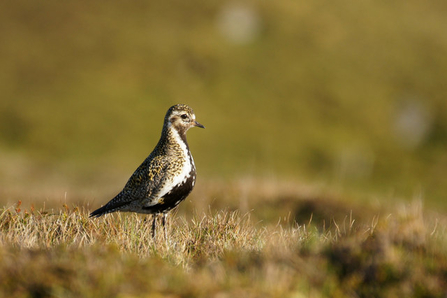
Golden Plover
Female black darter dragonfly, Ballynahone July 2020

Golden Plover
A beautiful wading bird known for its haunting call and distinctive golden spangled plumage, with contrasting black face and belly in the breeding season.
Although large numbers flock to our muddy shores and wetlands in winter, it is a rare breeder in the remote uplands of Antrim and Fermanagh.
It is estimated that only 10-20 breeding pairs are left in NI. Golden Plover is breeding on Cuilcagh Mountain, one of the sites UW works on through the CANN project, but it’s numbers are in decline.
Listen to its call
Sky dance of the hen harrier (https://www.youtube.com/watch?v=cbuovJyIWLs)
Sky dance of the hen harrier (c) RSPB
Their spectacular sky dance display can be seen in upland areas in the spring, when the male and female chase and tumble high over the moors and forests in a frenetic ‘sky-dance’.
In summer, it can be found on upland moorland and young conifer plantation: in winter on open ground around the coast and larger lakes.
Heavily persecuted bird historically and one of NI’s priority species. Northern Ireland supports the only tree nesting population of Hen Harriers in the world.
Males are blue-grey with a white rump, pale underside and black wing tips. Females are larger than males, brown above and streaky below, with a white rump and a banded tail. It’s wing span is 1.1m!
They can be found hunting small birds and mammals across our uplands during their breeding season.
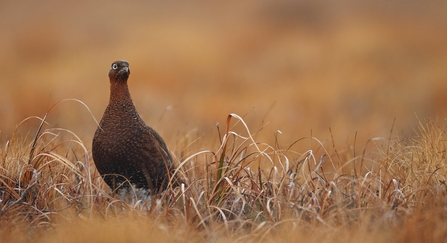
A red grouse hen (Lagopus lagopus) in heather - Luke Massey/2020VISION
If you’re lucky while out on the bog or in the hills you might hear the distinctive call of the red grouse that sounds strangely like “Go back, Go back, Go Back”
These beautiful birds blend into the heather on which they feed and shelter.
The only tell is the bright red wattle above the male birds eye.
An encounter with a red grouse is likely one of surprise, as bird sits tight in the heather until flushed noisily when you get too close!
Due to their rapid decline in numbers they are an NI priority species and are red listed in Ireland as a species of conservation concern.
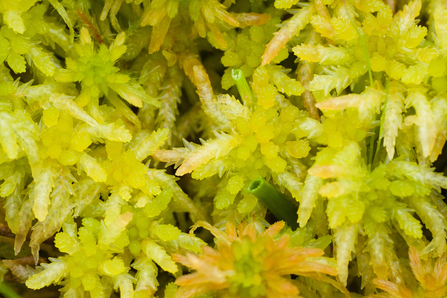
Sphagnum moss
One of the most important plant species of the bog is Sphagnum moss. They create a multi-coloured living carpet across the surface of bogs, from deep crimson to bright green. Sphagnum mosses can hold up to 20x times their weight in water and are what makes bog water more acidic. The take in nutrients such as calcium and replace them with hydrogen, which acidifies the water. These wet and acidic conditions are what slows the process of plants decomposing, which leads to the formation of peat! Because of their absorbent properties, these mosses were historically used as bandages to dress wounds and soak up blood!
Sphagnum moss is the main component of peat in raised bogs. There are thought to be 24 species of sphagnum in Ireland, that grow in bog pools, as flat lawns or tightly packed together to form hummocks or cushions. Hummocks can reach 1m tall and have up to 50,000 plants!
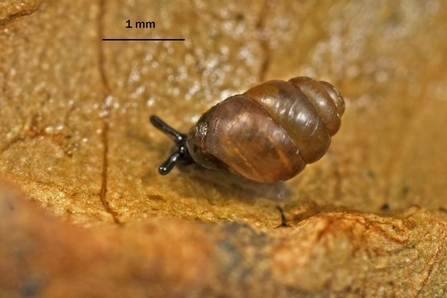
Desmoulin's whorl snail
This rare and tiny snail is typically smaller than a baby’s fingernail, with a shell height up to just 2.6mm.
In 2018 it was recorded for the first time in Northern Ireland on one of the CANN Project sites that the Ulster Wildlife team are working on - Corbally Fen near Tyrella Downpatrick.
It is one of 11 types of whorl snail found in the UK and Ireland.
The species was named in honour of the early-19th-century French naturalist Charles des Moulins.
Skylark singing (https://youtu.be/6xCMC_u3nAA)
Skylark singing (c) Ulster Wildlife
The Skylark is the songster of the bog and most often heard far above your head, singing to defend its territory.
Skylarks display by singing their amazing clear warbling song while ascending over one hundred feet in the air. Like all song birds they can sing and breath at the same time but the skylark takes the biscuit, it can sing for nearly 10 minutes straight without a pause.
Due to their declining numbers the skylark is a UK red-listed and Irish amber-listed species of birds of conservation concern, as well as a NI priority species
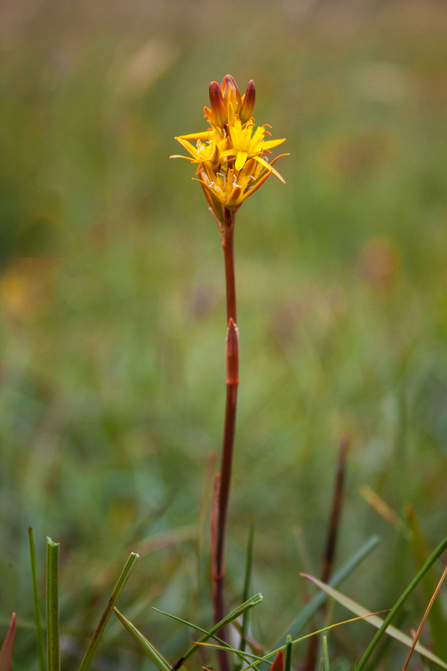
Bog asphodel
Bog Asphodel bursts into flower in summer turning the bog bright yellow, with their spike of 6-20 starry, golden flowers.
Bog Asphodel produces creeping rhizomes (underground stems) from which it can reproduce; however, it also produces seeds and its flowers attract a range of pollinating insects.
This plant loves the wet pools and flushes of the bog. It’s Latin name translates as “Bone Breaker” as it’s thought that animals grazing on it became brittle boned!
It’s flower heads were once harvested and used for dyes
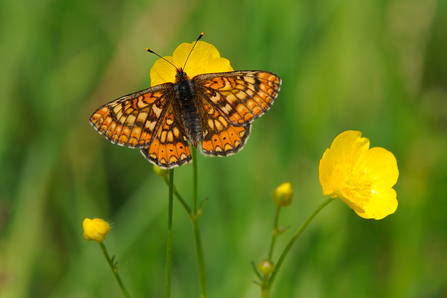
Marsh fritillary (c) Amy Lewis
One of Europe’s rarest butterflies can sometimes be found on the edges of our bogs and fens.
Their beautiful wings resemble stain glass windows, with a highly-variable pattern of orange, brown and yellow markings.
The adults an be seen flying between late May and mid July
Their main food plant is the Devil’s-bit-scabious and their larvae spin conspicuous webs which can be easily recorded in late autumn.
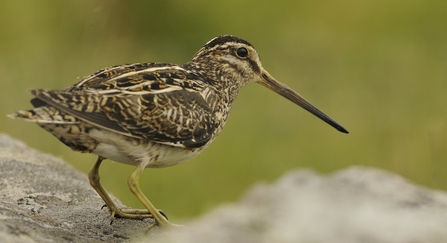
Snipe (c) Fergus Gill/2020VISION
This shy and stumpy little wader with its long straight bill is most often encountered when it’s flushed out of the heather and zig zags off into the distance called “snatch.....snatch!”
Snipe love the wet peat and bog pool edges where they can probe into the ground for invertebrates.
At sunset they display over the bog by rubbing their tail feathers together producing an eerie whirring sound known as drumming!
It was because of this display that they used to be known as the weather-bleat.
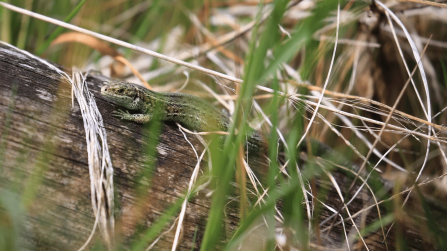
Common lizards at Slievenacloy (c) Ronald Surgenor
Our only native reptile is most often seen scuttling quickly into the undergrowth on a warm summer day.
The best time to spot them is early on a spring morning before they get the chance to warm up and you might see them basking in the sunshine.
Its unusual as reptiles go because it incubates its eggs inside its body and actually gives birth to live young!
If a lizard is caught by the tail, the tail can break off and will continue to move. This confuses predators, allowing the lizard to escape. The lizard will grow a new tail, often shorter and blunter than the original.
Bogs are low nutrient environments, making them hostile and difficult places to live for many plants and animals. To survive and thrive the wildlife in our bogs have adapted clever ways to get their vital nutrients - trapping and digesting insect prey! Bogs contain three types of plants which trap and digest insects, namely sundews, butterworts and bladderworts. Sundews and butterworts trap insects on sticky leaf surfaces while bladderworts live in water and trap swimming insects in small, air-filled bladders.
Sundews
Sundews are covered in glistening, sweet-smelling ‘tentacles’ (called stalked glands) that lure insects in. The insects are immediately trapped in the sticky glue, and its movements trigger other ‘tentacles’ to bend towards the prey until the leaf is completely closed up. Over a few days the insect is digested into a nutrient-rich soup for the plant. There are 3 species of sundew in Ireland – the round leaved sundew, the intermediate sundew and long-leaved sundew.
Butterworts
There species of butterworts are found in Ireland’s bogs and fens. These plants get their name from the greasy butter-like feel of their leaves. Their beautiful pink and purple flowers distract insects from the deadly weapon below – ‘glue’ covered leaves. The insects become stuck on the leaves, which curl over to digest their prey, leaving nothing but a dry insect husk.
Bladderworts
Living in shallow pools and streams, bladderworts are rootless, free-floating plants who’s name derives from the tiny bladder-like traps on their feathery submerged leaves. Their small bright yellow flowers can be seen on the surface of bog pools in the summer. At only 5mm across, these bladders are activated when an insect touches tiny trigger hairs, opening the trap-door and sucking the insect in at vacuum speeds of up to 1/15,000th of a second! Once inside the insect is digested and nutrients absorbed by the plant.
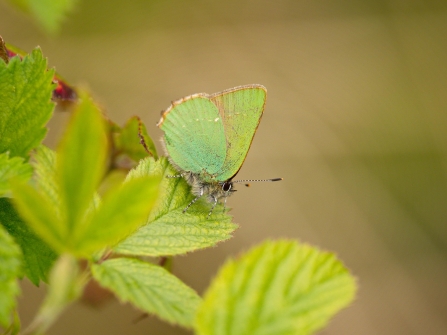
Green Hairstreak
The green hairstreak is our only green butterfly so its unmistakable when you see it!
These tiny butterflies are on the wing in Spring time and their green wings blend in perfectly with the fresh leaves of young birch trees around the edges of the bog where they’re most likely to be spotted.
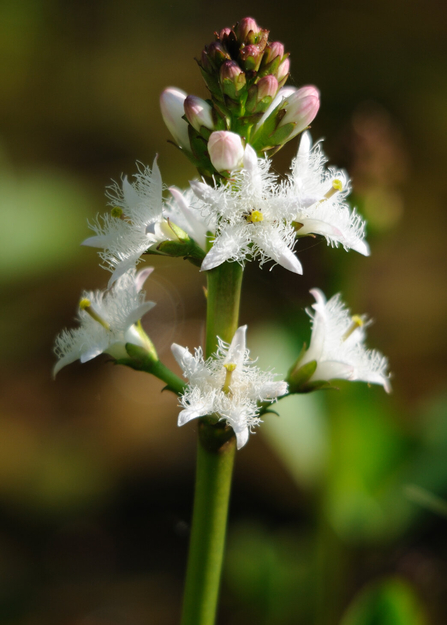
Bogbean (c) Amy Lewis
The beautiful pink/white stary feathery shaped flowers of bog bean can be seen raised above the water in bogs and fens.
Its name is derived from its fruit which resembles a small bean.
Many of the landowners we work with tell us that it used to be made into a foul-tasting concoction called bogbine, which was drunk to ‘cleanse the blood’
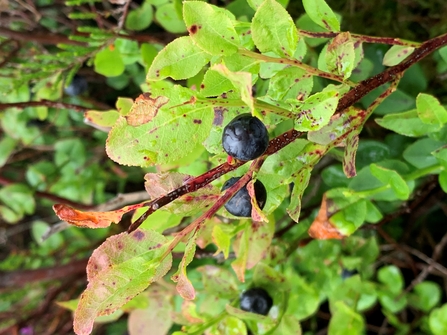
Bilberry
In Ireland, the fruit is known as fraughan, from the Irish fraochán, and is traditionally gathered on the last Sunday in July, known as "Fraughan Sunday".
Bilberries were also collected at the Celtic festival of Lughnasadh in August, the first traditional harvest festival of the year.
It was a source of purple dye for fabric and is beautiful in a tart – full of vitamin C!
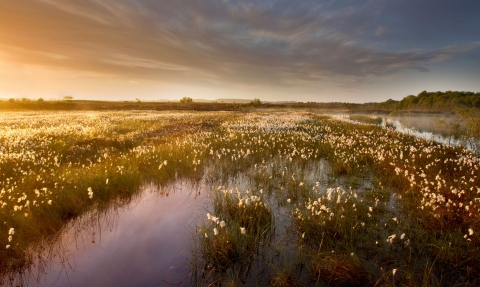
Ballynahone Bog Nature Reserve (c) Ben Hall 2020 Vision